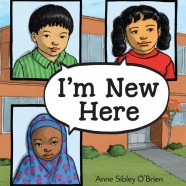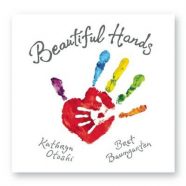It’s important: “Let’s Talk About Race”

Talking about race is hard for me, but that doesn’t let me off the hook. Racism isn’t either/or, as in I don’t shout hateful slurs therefore I’m not racist. I’m racist because I’d rather hide any prejudice I have from growing up as a white, middle-class, suburban female in America than have important conversations where I might feel uncomfortable. My silence won’t help our kids. So let’s talk about it.
Let’s Talk About Race was written by Julius Lester and illustrated by Karen Barbour. Lester, who sadly died in 2018, wrote, “I am a story. So are you. So is everyone.” He wanted kids to know that being African-American was an important part of his story, not the entirety of it. He wanted to engage kids in conversations to see our differences and our commonalities. “What is your favorite food, your religion, your favorite color, your nationality? All of these things are a part of our stories.” But, he reminds us all, “…some stories are true. Some are not. Those who say ‘MY RACE IS BETTER THAN YOUR RACE’ are telling a story that is not true.”
After you read Let’s Talk About Race with your kids, talk about race! Open up a safe conversation where students can share and ask questions. Work hard not to deny experiences, and challenge with compassion any statements that make others “less than.” And talk about all the other wonderful parts of our stories, from favorite foods to hair color to pet peeves. You can make a questionnaire based on all the elements Lester talks about for kids to answer about themselves. Then, kids can find someone who had the same answer on their list. When we help our children talk about race and equality, we help build a stronger, kinder world.
Read MoreHow-To Poems and My Love of Hedgehogs
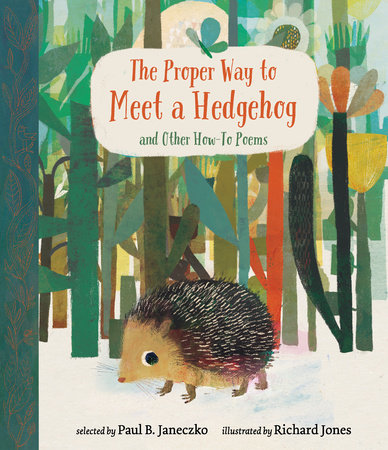
How-to poems are an easy introduction to poetry, to nonfiction, and to writing what you know. This book of poems selected by Paul B. Janeczko and illustrated by Richard Jones has such a wide range of topics that all your students will find at least one poem that they love. My favorites are “Toasting Marshmallows” by Marilyn Singer and “How to Scare Monsters” by Rebecca Kai Dotlich.
This book was given to me by fellow librarian Linda Pannuto because my storytimes always began and ended with Barb the Hedgehog. (She can curl up into a ball when she is shy.) And look at what Barb and I now have! Honey Hedgehog Cookies from Trader Joe’s AND a hedgehog purse! I’m all prickly with excitement!
Share “The Proper Way to Meet a Hedgehog and Other How-To Poems” and have students write an informational poem about what they know how to do. Share Honey Hedgehog Cookies while they write and get your own Folkmanis hedgehog puppet to share. Hands off the purse, though. That beauty is mine.
(Shout out to Lisa Wheeler and Janie Bynum for their book, “Porcupining: A Prickly Love Story” from which I stole Barb’s name. You two are sharp.)

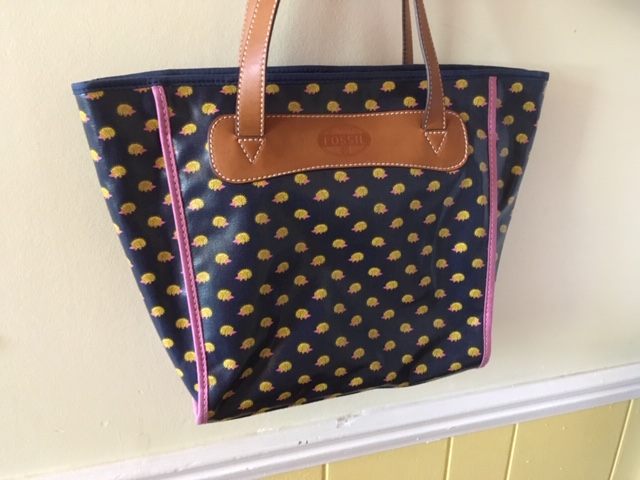
Start your new year off with compassion
This is a post I’ve shared before but I think it’s more important than ever to make your classroom a place of acceptance and compassion from day one.
It’s September, the start of a new school year. I have no apples for you teachers, but I do have the perfect back-to-school picture book to teach empathy and point of view: I’m New Here by Anne Sibley O’Brien.
Maria, Jin, and Fatimah are new to their schools and to the United States. Through their stories, we get a glimpse of what it’s like to hear a new language, to see a new alphabet, and to try to pick up a new set of classroom expectations. “Back home… I knew just what to do.” All of your students can relate to the unsettled feeling of a first day in a new classroom. With I’m New Here, you can expand upon that feeling to help your students empathize with people who are new to our country. I love that Anne Sibley O’Brien not only shows what it’s like to be an immigrant, but how we all learn from each other. On one page, O’Brien writes from Jin’s point of view, “I am learning from others. And they are learning from me.” Jin asks a little boy, “How to spell cloud?” The boy responds, “C-L-O-U-D.” Jin holds up a piece of paper with Korean characters on it. “This is cloud in Korean.” “Cool.”
Michelle A., a gifted kindergarten teacher of English as a Second Language students and a remarkable friend, told me about Step Inside thinking. After you’ve read through the book, ask your students to “step inside” a character and imagine that they are Maria, Jin, or Fatimah. Students can write and draw from the perspective of the character, describing what was a challenge and what helped. You can turn this book into a readers’ theater script for students to perform, or have students take on the roles in an impromptu performance as you reread the book. As a class, you can talk and write about what you all can do to help a new student feel welcome. Whether or not you gain a new student during the year, all of your students will gain a wider, more empathetic perspective from I’m New Here.
Read MoreCelebrate all the BEAUTIFUL HANDS!
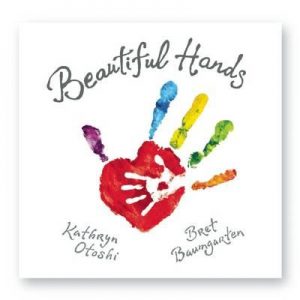 August is crazy-busy for teachers and parents of little learners, so grab this book for a quick-prep, interactive lesson: BEAUTIFUL HANDS by Kathryn Otoshi and Bret Baumgarten.
August is crazy-busy for teachers and parents of little learners, so grab this book for a quick-prep, interactive lesson: BEAUTIFUL HANDS by Kathryn Otoshi and Bret Baumgarten.
The book begins with a question, “What will your beautiful hands do today?” which leads to more questions with inspiration-sparking answers:
“Will they lift…/
spirits?/
Or stretch…/
imaginations?”
There are also invitations to participate (“What can you lift?” “What can you stretch?”) that will especially hook your movers and shakers.
All of the art is made of handprints, so after sharing the book, make handprint art! Paint, trace, color, cut, arrange into a mural that encourages us all to reach high. Write about what our hands can and will do, discuss how our hands are alike and still uniquely ours. Reread BEAUTIFUL HANDS and compare it to the book THE HANDIEST THINGS IN THE WORLD by Andrew Clements and Raquel Jaramillo. 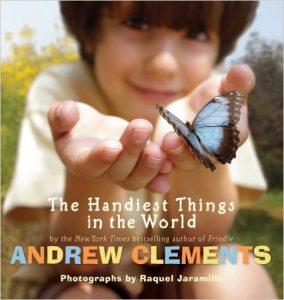
All who work with little ones deserve a big hand, so consider this post a “high five” from me to you as you start the school year!
Read More



